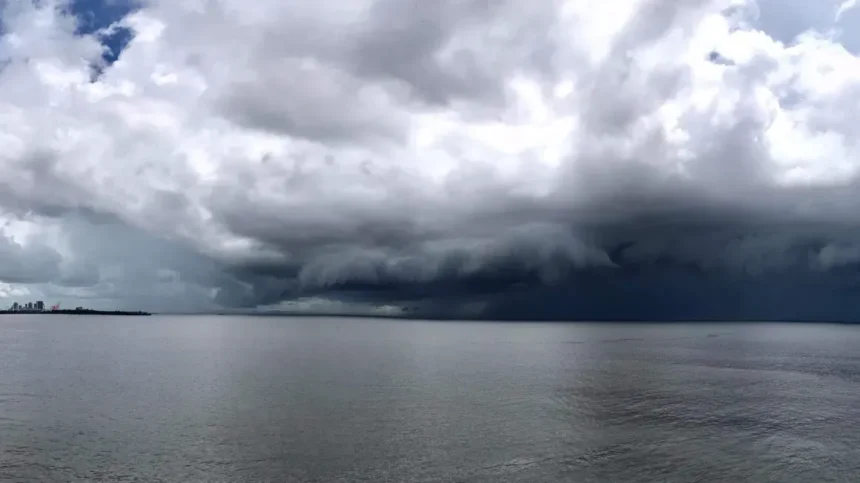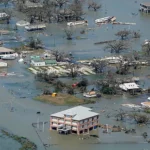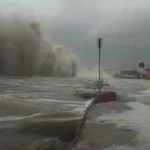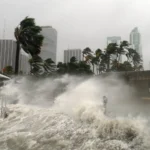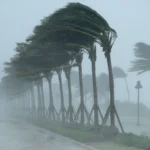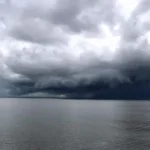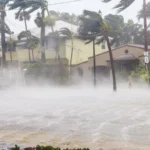Hurricanes are powerful and potentially devastating natural disasters that can cause widespread destruction. When a hurricane is forming or heading towards Florida, it’s crucial to stay informed and updated to ensure safety and preparedness. There are several ways to track hurricanes effectively, especially when you’re in a region like Florida that is prone to such events. Below, we provide comprehensive methods for staying updated on the current hurricane in Florida to help you take timely action and remain safe.
1. Use Official Government Websites
a. The National Hurricane Center (NHC)
The National Hurricane Center (NHC) is the foremost authority when it comes to hurricane tracking. The NHC is part of the National Oceanic and Atmospheric Administration (NOAA) and provides real-time updates, hurricane warnings, and detailed tracking data. On the NHC’s website, you can find up-to-date hurricane maps, satellite images, and the official hurricane forecast cone, which shows the probable path of a hurricane.
The NHC also releases advisories every few hours during a storm, which include the hurricane’s current position, wind speed, expected changes in intensity, and possible landfall. These advisories are an essential resource for anyone trying to stay ahead of a hurricane’s path.
b. National Weather Service (NWS)
Another key resource is the National Weather Service (NWS). While the NHC focuses specifically on hurricanes, the NWS provides a broader range of weather-related data, including hurricane updates. The NWS offers local weather alerts, hurricane watches, and warnings for specific areas. This is particularly useful if you live in Florida, as the service offers localized information.
By utilizing both the NHC and NWS websites, you can stay fully informed about any current hurricanes in Florida and monitor their progression with a high degree of accuracy.
2. Download Hurricane Tracking Apps
a. My Hurricane Tracker
One of the most popular and user-friendly apps for tracking hurricanes is My Hurricane Tracker. This app provides real-time updates, hurricane maps, and alerts for any active storms in your area. It also offers historical data on past hurricanes, helping users understand the potential impact of the storm.
My Hurricane Tracker sends push notifications as soon as a hurricane watch or warning is issued, allowing you to stay updated even when you’re on the go.
b. Hurricane by American Red Cross
The Hurricane App by the American Red Cross is another highly recommended tool. This app provides step-by-step instructions on what to do before, during, and after a hurricane. It also features an interactive storm tracker that allows users to follow the path of any hurricanes affecting Florida.
Additionally, the app includes a “safe and well” feature that lets you notify loved ones of your status during a storm, a critical feature for anyone facing a major hurricane.
3. Monitor Local News and Media
a. Television News Stations
Local news channels like WPLG Local 10, WTVJ NBC 6, and WFOR CBS 4 are excellent resources for hurricane tracking in Florida. These stations provide regular updates on hurricanes and offer live broadcasts that include satellite imagery, meteorological analysis, and community safety updates.
Many news stations also have apps or online streams, allowing you to stay connected even if you’re away from your television. Watching live coverage from local meteorologists can offer valuable insights tailored to your specific region in Florida.
b. Radio Stations
In case of power outages, which are common during hurricanes, local radio stations remain a vital source of information. Stations such as WLRN 91.3 FM and WIOD 610 AM broadcast hurricane updates and essential information regarding evacuations, road closures, and shelter locations.
Be sure to have a battery-powered or hand-crank radio in case of emergencies, as relying solely on internet-based information could become risky if the power goes out.
- What Is the Projected Path of the Latest Hurricane in Florida?
- Which regions in Florida are at the highest risk for hurricanes this year?
- How Is Florida Getting Ready for the 2024 Hurricane Season?
4. Social Media Platforms
a. Twitter
Social media platforms like Twitter have become key sources of real-time information during hurricanes. Government agencies, meteorologists, and news organizations use Twitter to provide live updates.
For instance, the National Hurricane Center (@NHC_Atlantic) and NOAA (@NOAA) Twitter accounts regularly post the latest advisories, storm tracks, and emergency information. You can also follow local Florida meteorologists and news outlets for region-specific updates.
b. Facebook and Instagram
Facebook and Instagram also play a role in disseminating hurricane information. Many government agencies and local news stations post live updates, videos, and advisories on these platforms. You can follow pages like Florida Division of Emergency Management or FEMA to get real-time updates.
These platforms also allow communities to share helpful tips, evacuation information, and personal experiences, which can be critical during a hurricane.
5. Satellite and Radar Services
a. NOAA Satellite Imagery
For those who want to track hurricanes visually, NOAA’s satellite imagery is a valuable resource. NOAA’s website features real-time images of hurricanes captured by both geostationary and polar-orbiting satellites. These high-resolution images provide a detailed view of the storm’s size, intensity, and movement. By tracking these images, you can get a sense of how the storm is progressing and where it’s likely headed.
b. Local Radar Services
Many news stations and weather apps also offer radar services that allow you to track the hurricane in real time. Watching the radar can help you identify areas that are currently experiencing heavy rain, strong winds, or storm surges. This is especially helpful when preparing for the hurricane’s landfall.
6. Sign Up for Emergency Alerts
a. Wireless Emergency Alerts (WEA)
In the United States, Wireless Emergency Alerts (WEA) are an important tool for receiving emergency notifications. These alerts are automatically sent to your smartphone and notify you of hurricane warnings, evacuations, and other life-threatening weather conditions. You don’t need to sign up for WEAs, as they are enabled by default on most smartphones.
b. FEMA App
The FEMA app also provides alerts for hurricanes and other natural disasters. It offers preparedness tips and information about open shelters in your area, which is particularly useful during evacuations. The FEMA app allows users to customize notifications, ensuring that you receive information relevant to your specific location in Florida.
Conclusion
Tracking hurricanes in Florida is essential to ensure the safety of you and your loved ones. By using official government websites, downloading reliable hurricane apps, monitoring local news and social media, and signing up for emergency alerts, you can stay informed and take the necessary precautions to minimize the impact of the storm.

